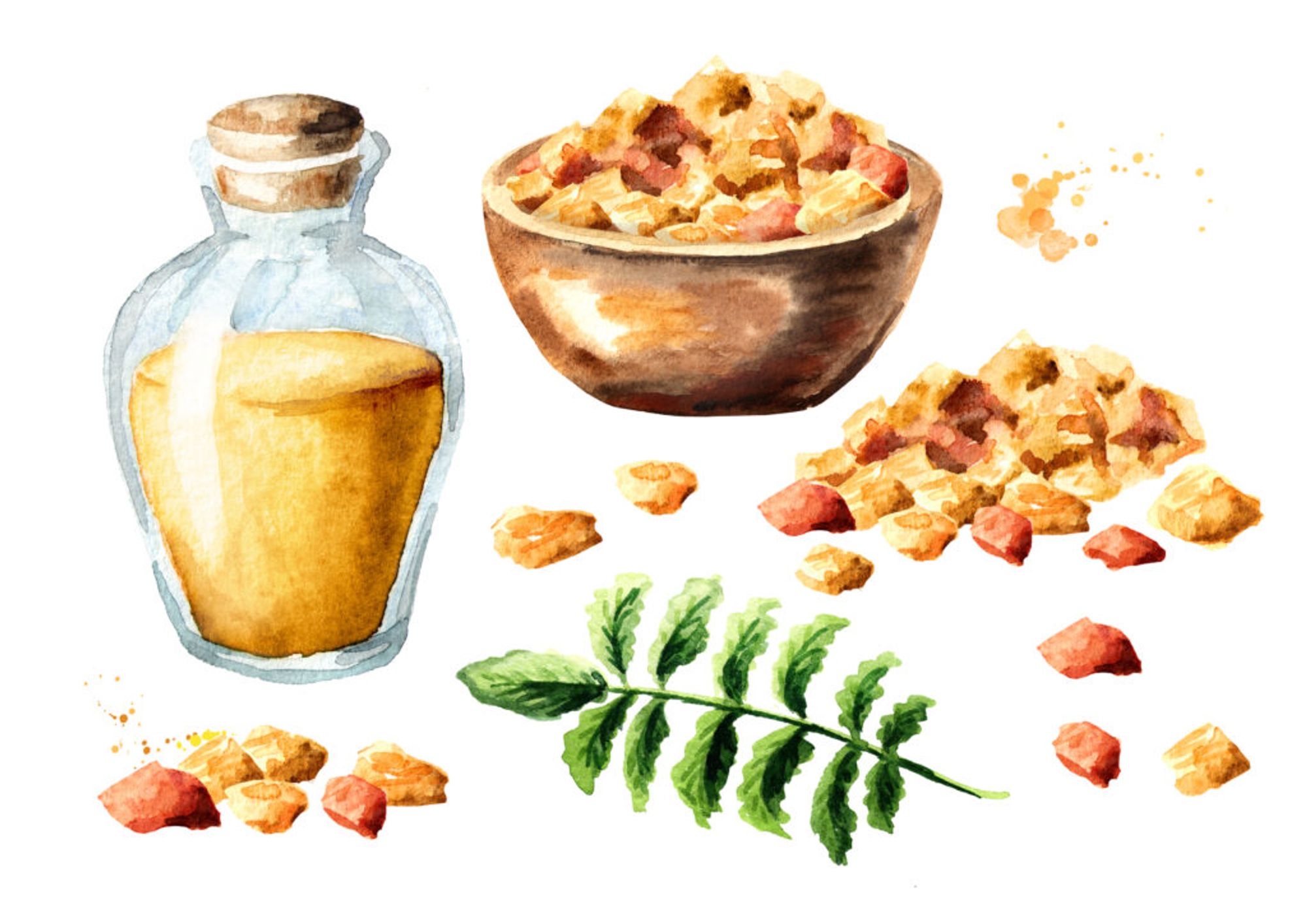What is Frankincense?
Frankincense is a tough, resinous tree found growing in some of the harshest desert environments on earth. The tree can survive the scorching Somali sun and many months of drought.
The aromatic resin produced by the tree is highly sought-after for its use as an incense, and medicine.
Today you’ll find frankincense (boswellia) supplements sold all over the world for its anti-inflammatory, carminative, and digestion-supportive benefits.
The herb is popular among athletes for preventing a specific form of joint inflammation caused during heavy exercise that could lead to arthritis later in life.
Topical frankincense balms are sued to speed wound healing and stave off infection.

What Else is Frankincense Known As?
- Olibanum
- Boswellia
- Sallaki (Sanskrit)
Herbal Actions/Properties of Frankincense
- Antioxidant
- Anti-inflammatory
- Antiseptic
- Carminative
- Vulnerary
- Emmenagogue
What is Frankincense Used For?
The most common use for frankincense is as an incense. The resin is chock-full of aromatic terpenes, which release its characteristic aroma in the air when burned or heated.
As a supplement, frankincense is used for its unique anti-inflammatory profile — which works by inhibiting an enzyme known as 5-LOX. This enzyme converts fatty acids into pro-inflammatory leukotrienes. These compounds trigger inflammation in different areas of the body.
Frankincense is especially useful for inflammation of the digestive tract and within the joints.
Topical frankincense products are used to speed wound healing, clean cuts and scrapes by killing infectious bacteria, and reducing the formation of scars and stretch marks.
Folklore & History of Frankincense
Frankincense has a long history of use. It’s even mentioned in the Catholic Bible as one of the three precious gifts given to baby Jesus.
The resin from frankincense was used by religious leaders of Islan, Catholocism, and Judaism in the form of incense.
After the Roman Empire invaded and decimated the trading routes of herbs and spices within the Middle East, the use of frankincense dramatically diminished. The use of frankincense was later banned by the Roman Catholic Church due to the associations with pagan worship.
The ban was eventually lifted, and burning frankincense resins and other aromatic herbs became a regular practice in catholic churches around Europe.
Frankincense Side-Effects & Safety
Frankincense is considered a safe herb, and there are few side-effects of cautions for using the herb. Some people experience digestive upset after using frankincense such as nausea or acid reflux.
Whenever using frankincense on the skin for the first time, it’s wise to apply only a small amount at first and wait about 30 minutes. If there are no negative reactions, you can apply frankincense over a larger area safely.

Scientific Research Involving Frankincense
- [2006] Safety and toxicological evaluation of a novel, standardized 3-O-acetyl-11-keto-β-boswellic acid (AKBA)-enriched Boswellia serrata extract (5-Loxin®).
- [2003] Immunomodulatory activity of boswellic acids of Bos wellia serrata Roxb.
- [2003] Efficacy and tolerability of Boswellia serrata extract in treatment of osteoarthritis of knee–a randomized double blind placebo controlled trial.
- [2001] Therapie des aktiven Morbus Crohn mit dem Boswellia-serrata-Extrakt H 15.
- [2001] Effects of gum resin of Boswellia serrata in patients with chronic colitis.
- [1997] Effects of Boswellia serrata gum resin in patients with ulcerative colitis.